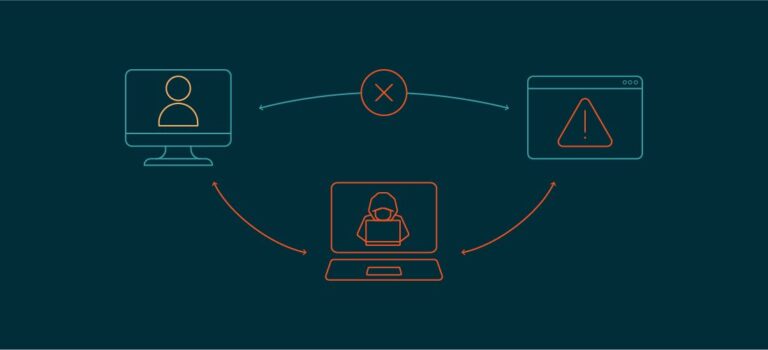The Ultimate Guide to Cross-Site Scripting (XSS) and How to Protect Against It
Table of Contents
- Introduction
- What Is Cross-Site Scripting (XSS)?
- The Evolution of XSS Attacks
- Types of XSS Attacks
- Stored XSS
- Reflected XSS
- DOM-Based XSS
- How Attackers Exploit XSS Vulnerabilities
- Real-World Examples of XSS Attacks
- Consequences of XSS Attacks
- How to Detect XSS Vulnerabilities
- How to Prevent XSS Attacks
- Input Validation
- Output Encoding
- Content Security Policy (CSP)
- HTTPOnly and Secure Cookies
- Escaping Dynamic Content
- XSS and Modern Web Frameworks
- XSS in Single Page Applications (SPAs)
- Browser Security Measures
- Tools to Scan and Test for XSS
- Best Practices for Developers
- Best Practices for End Users
- Final Thoughts
- References
1. Introduction
Cybersecurity threats are constantly evolving, and one of the most persistent and dangerous vulnerabilities found in web applications today is Cross-Site Scripting (XSS). This blog post will explore XSS in depth, covering how it works, its real-world impact, and what developers and users can do to prevent it. If you’re building or maintaining a website, understanding XSS is not just helpful—it’s essential.
2. What Is Cross-Site Scripting (XSS)?
Cross-Site Scripting (XSS) is a type of injection attack where an attacker injects malicious scripts into content from otherwise trusted websites. XSS attacks occur when web applications allow users to input data without properly validating or escaping it. Once the data is rendered in the browser, it executes as part of the webpage.
These malicious scripts can hijack sessions, steal cookies, redirect users, deface websites, and perform actions on behalf of users without their consent.
3. The Evolution of XSS Attacks
Initially discovered in the early 2000s, XSS vulnerabilities have become a top concern for security professionals. The OWASP Top 10 Web Application Security Risks consistently includes XSS due to its prevalence and impact. Modern web development practices have introduced frameworks that mitigate some XSS risks, but new attack vectors continue to emerge as applications become more complex.
4. Types of XSS Attacks
Stored XSS
Stored (or persistent) XSS occurs when the malicious script is permanently stored on the target server, such as in a database, forum post, or comment field. When users access the stored data, the script executes in their browsers.
Reflected XSS
Reflected XSS occurs when an attacker tricks a user into clicking a specially crafted link. The payload is reflected off the web server, usually via an error message or search result, and then executed by the browser.
DOM-Based XSS
DOM-based XSS exploits occur entirely on the client side. The vulnerability is due to improper handling of the Document Object Model (DOM) in JavaScript. The attack modifies the DOM and injects scripts that the browser executes.
5. How Attackers Exploit XSS Vulnerabilities
Attackers leverage several techniques, including:
- Social engineering to trick users into clicking malicious links.
- Exploiting comment sections or forums to embed scripts.
- Tampering with form submissions or URLs.
- Utilizing vulnerable third-party libraries.
6. Real-World Examples of XSS Attacks
- MySpace Worm (2005): A stored XSS vulnerability allowed Samy Kamkar to create a worm that added him to millions of friend lists in a matter of hours.
- eBay Vulnerabilities: Attackers used reflected XSS to craft links that impersonated legitimate listings, stealing user credentials.
- British Airways (2018): Hackers used a form of XSS to inject a skimmer script that harvested payment data from 380,000 customers.
7. Consequences of XSS Attacks
- Credential theft
- Session hijacking
- Data leakage
- Defacement of websites
- Malware distribution
- Exploitation of user trust
8. How to Detect XSS Vulnerabilities
- Manual code reviews
- Penetration testing
- Automated scanners like OWASP ZAP or Burp Suite
- Browser developer tools
- Content injection testing
9. How to Prevent XSS Attacks
Input Validation
Always validate and sanitize input from all sources—users, APIs, and third parties. Use strict input rules.
Output Encoding
Before displaying data, encode it for the context it’s used in: HTML, JavaScript, CSS, or URL.
Content Security Policy (CSP)
A CSP header helps reduce XSS risks by restricting how and where scripts can be loaded.
HTTPOnly and Secure Cookies
Mark cookies as HTTPOnly to prevent JavaScript access, and Secure to allow only over HTTPS.
Escaping Dynamic Content
Escape content dynamically inserted into the DOM to prevent script execution.
10. XSS and Modern Web Frameworks
Frameworks like React, Angular, and Vue offer built-in protections, such as auto-escaping HTML. However, developers must avoid using dangerouslySetInnerHTML or similar functions unless necessary and well-sanitized.
11. XSS in Single Page Applications (SPAs)
SPAs rely heavily on client-side scripting and often fetch data asynchronously. Developers must ensure that dynamic content rendered via JavaScript is sanitized and not directly inserted into the DOM.
12. Browser Security Measures
Modern browsers implement XSS filters and features like:
- SameSite cookie attributes
- Sandbox iframes
- Script blocking for known sources
13. Tools to Scan and Test for XSS
- OWASP ZAP: Open-source tool for finding vulnerabilities.
- Burp Suite: A powerful tool for penetration testing.
- Acunetix: Commercial scanner with deep crawling capabilities.
- Netsparker: Automated web app scanner.
- XSSer: Tool dedicated to detecting XSS vulnerabilities.
14. Best Practices for Developers
- Use security libraries and frameworks
- Follow the principle of least privilege
- Enable CSP headers
- Conduct code reviews
- Use templating engines safely
- Educate team members regularly
15. Best Practices for End Users
- Keep browsers and extensions up to date
- Avoid clicking unknown or suspicious links
- Use a password manager
- Log out of sensitive sites when not in use
- Use browser extensions that limit script execution (e.g., NoScript)
16. Final Thoughts
Cross-Site Scripting remains one of the most prevalent web vulnerabilities today. With the increasing complexity of web applications and the rise of client-side logic, developers must be more vigilant than ever. By understanding XSS, employing secure coding practices, and staying informed about the latest threats, both developers and users can significantly reduce the risk of exploitation.
17. References
- OWASP XSS Guide
- Mozilla Developer Network (MDN) – XSS
- Google Web Fundamentals Security
- CSP Level 3 Specification
- Web Security Academy – PortSwigger






